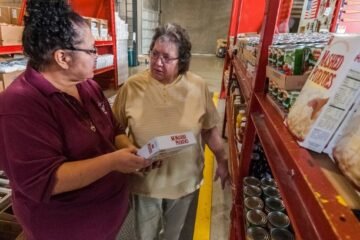The World Health Organization (WHO) has classified JN.1 as a variant of interest (VOI) due to its large number of mutations and its rapid spread in some regions. JN.1 is a sublineage of BA.2.86, also known as Pirola, which is a descendant of Omicron, the dominant variant of SARS-CoV-2, the virus that causes COVID-19.

What is JN.1, and where did it come from?
JN.1 was first detected in the United States in September 2023, and by the end of October, it made up less than 0.1% of SARS-CoV-2 viruses. However, in recent weeks, JN.1 has shown a significant increase in its proportion of genomic sequences, reaching an estimated 15–29% of cases in the United States as of December 8, 2023. It is currently the fastest-growing variant in the country, according to the Centers for Disease Control and Prevention (CDC).
JN.1 is closely related to BA.2.86, which was classified as a variant under monitoring by the WHO in August 2023. There is only a single change between JN.1 and BA.2.86 in the spike protein, which is the part of the virus that attaches to human cells. The spike protein is also the main target of vaccines and antibodies.
The WHO updated its tracking system and working definitions of variants of concern (VOCs) and variants of interest (VOIs) on March 15, 2023, and based on the updated information, BA.2.86 and its sublineages, including JN.1, were classified as VOIs. VOIs are variants that have genetic changes that are predicted or known to affect virus characteristics such as transmissibility, disease severity, immune escape, and diagnostic or therapeutic escape. VOIs also have evidence of community transmission or multiple COVID-19 clusters in multiple countries.
How does JN.1 affect the COVID-19 situation?
The continued growth of JN.1 suggests that it is either more transmissible or better at evading our immune systems. However, at this time, there is no evidence that JN.1 presents an increased risk to public health relative to other currently circulating variants. There is also no indication of increased severity from JN.1 at this time.
Updated COVID-19 vaccines are expected to increase protection against JN.1, as they do for other variants. COVID-19 tests and treatments are also expected to be effective against JN.1, according to the CDC.
The rapid growth of JN.1 compared with other variants raises the question of whether this variant might drive an incremental increase in infections. COVID-19 activity is currently increasing in the United States, and it has a pattern of peaking in late summer and around the new year. Right now, it is not clear to what extent JN.1 may be contributing to these increases or possible increases through the rest of December.
The CDC will closely monitor COVID-19 activity and the spread of JN.1 and will provide updates as more information becomes available.
What are the symptoms of the JN.1 infection?
It is not currently known whether the JN.1 infection produces different symptoms from other variants. In general, symptoms of COVID-19 tend to be similar across variants. The types of symptoms and how severe they are usually depend more on a person’s immunity and overall health than which variant causes the infection.
Some of the common symptoms of COVID-19 are:
- Fever or chills
- Cough
- Shortness of breath or difficulty breathing
- Fatigue
- Muscle or body aches
- Headache
- Loss of taste or smell
- Sore throat
- Congestion or runny nose
- Nausea or vomiting
- Diarrhea
If you have any of these symptoms, you should get tested for COVID-19 and follow the public health guidelines in your area. If you have trouble breathing, persistent pain or pressure in the chest, confusion, an inability to wake or stay awake, or bluish lips or faces, you should seek emergency medical attention.
How can we prevent the spread of JN.1 and other variants?
The best way to prevent the spread of JN.1 and other variants is to get vaccinated against COVID-19 as soon as possible. Vaccines are safe and effective, and they can reduce your risk of getting sick, hospitalized, or dying from COVID-19. They can also protect others around you, especially those who are more vulnerable to severe illness.
In addition to getting vaccinated, you should also follow these preventive measures:
- Wear a mask that covers your nose and mouth when you are in public or around people who are not from your household.
- Avoid crowds and poorly ventilated spaces, and stay at least 6 feet away from others who are not from your household.
- Wash your hands often with soap and water for at least 20 seconds, or use an alcohol-based hand sanitizer that contains at least 60% alcohol.
- Cover your cough or sneeze with a tissue or your elbow, and dispose of the tissue in a trash can.
- Clean and disinfect frequently touched surfaces and objects.
- Stay home if you are sick, and isolate yourself from others until you are no longer contagious.
- Contact your health care provider if you have any symptoms of COVID-19 or if you have been exposed to someone who has COVID-19.
By following these steps, we can help slow down the spread of JN.1 and other variants and protect ourselves and our communities from COVID-19.






